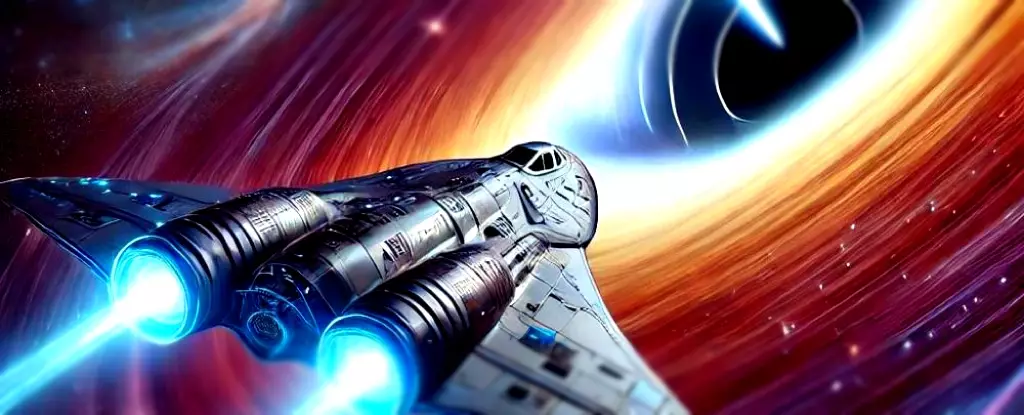The concept of warp drives has been a staple in science fiction for decades, popularized by iconic series like Star Trek. However, in reality, warp drives remain purely theoretical and have yet to be proven feasible. Recently, researchers have delved into the intersection of warp drives and black holes, presenting intriguing possibilities for future scientific exploration and experimentation.
In the realm of astrophysics, the fundamental limitation of light speed poses a significant challenge to interstellar travel. The vast distances between celestial bodies necessitate faster-than-light (FTL) propulsion systems, leading to the conceptualization of warp drives. These hypothetical devices would create a bubble enabling spacecraft to traverse space at superluminal velocities, akin to the warp technology seen in science fiction. However, the practical implementation of warp drives presents formidable obstacles, such as the immense energy requirements and the theoretical inconsistencies with current spacetime physics.
The study conducted by Remo Garattini and Kirill Zatrimaylov explores the potential interaction between warp drives and Schwarzschild black holes. These black holes, characterized by their simplicity and static nature, serve as ideal models for theoretical investigations. By integrating the equations governing warp drives with those describing black holes, the researchers propose a scenario where a warp bubble could coexist with a black hole, potentially reducing the negative energy demands of the warp drive.
Theoretical analysis suggests that under specific conditions, the presence of a warp bubble near a black hole could influence the entropy and energy dynamics of the system. This phenomenon opens the door to the prospect of creating mini warp drives in laboratory settings, signaling a new avenue for experimental research in quantum mechanics and gravitational physics. However, the study also highlights the intricacies and unresolved questions surrounding the thermodynamic implications of warp technology and its interactions with black holes.
While the theoretical framework presented by Garattini and Zatrimaylov offers intriguing insights into the potential applications of warp drives near black holes, numerous challenges and uncertainties persist. The complex interplay between negative energy requirements, black hole dynamics, and entropy fluctuations necessitates further exploration and experimentation. As researchers continue to unravel the mysteries of spacetime and quantum mechanics, the dream of practical warp technology may one day become a reality, paving the way for revolutionary advancements in interstellar travel and astrophysical exploration.
The marriage of warp drives and black holes represents a frontier of scientific inquiry that holds promise for expanding our understanding of the cosmos and pushing the boundaries of theoretical physics. While the road to practical warp technology remains arduous and fraught with complexities, the vision of traversing the cosmos at superluminal speeds captivates the imagination and fuels the pursuit of scientific discovery. As we navigate the uncharted territory of theoretical warp drives and black hole interactions, we tread upon the brink of a new era in astrophysics, where the impossible may one day become achievable.


Leave a Reply